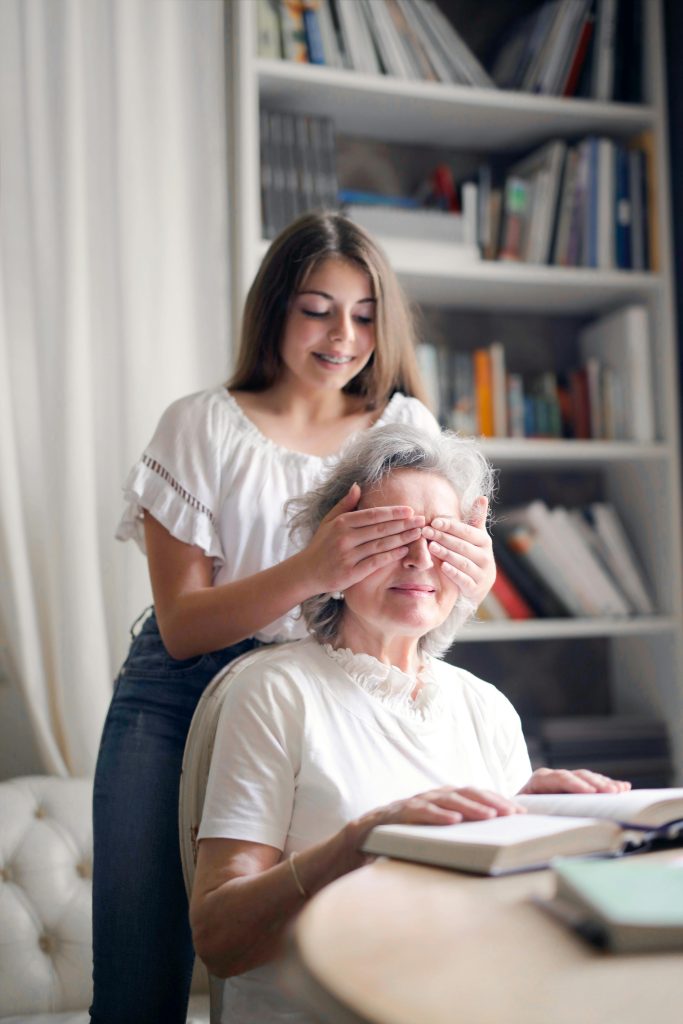Creating a welcoming environment in an assisted living facility is crucial for making residents feel comfortable, valued, and at home.By following these detailed steps, your facility can stand out, attract more residents, and provide exceptional care. A welcoming atmosphere not only enhances the daily experience of each resident but also builds a positive reputation that can lead to increased occupancy and sustained success. In this guide, we will delve into practical methods and best practices to transform your facility into a warm, inviting, and supportive home for all its residents.
I. Personalize Their Space
A. Customizing Resident Rooms
Personalizing the living spaces of residents can significantly impact their sense of belonging and comfort. Each room should feel like a sanctuary, tailored to individual preferences and needs.
Key Elements of Personalization
- Furnishings: Allow residents to bring their own furniture and decorations.
- Photos and Mementos: Encourage the display of personal photos and keepsakes.
- Color Schemes: Offer choices in color schemes to suit individual tastes.
- Comfort Items: Provide cozy blankets, pillows, and other comfort items.
B. Incorporating Resident Input
Involving residents in the personalization process not only makes their space feel like home but also gives them a sense of control and independence.
Techniques for Involvement
- Surveys and Questionnaires: Use surveys to gather preferences on room decor and layout.
- Family Consultations: Engage with family members to understand the resident’s history and preferences.
- Room Design Workshops: Host workshops where residents can plan and choose decor options.
II. Warm Greetings and Friendly Faces
A. The Importance of First Impressions
The way residents are greeted upon arrival sets the tone for their entire stay. Warm, friendly welcomes can ease the transition and make new residents feel immediately at home.
Best Practices for Warm Greetings
- Smiling Faces: Ensure all staff greet residents with a genuine smile.
- Personal Introductions: Staff should introduce themselves and other residents personally.
- Welcome Packages: Provide a welcome package with essential information and small gifts.
B. Ongoing Interactions
Consistent, positive interactions with staff help build trust and foster a sense of community.
Strategies for Positive Interactions
- Regular Check-Ins: Staff should regularly check in on residents to see how they are doing.
- Friendly Conversations: Encourage casual, friendly conversations between staff and residents.
- Recognition and Praise: Recognize residents’ achievements and contributions to the community.
III. Create Cozy Common Areas
A. Designing Inviting Spaces
Common areas should be designed to be comfortable, inviting, and conducive to social interaction. The right environment can significantly enhance residents’ quality of life.
Key Design Elements
- Comfortable Seating: Provide plenty of comfortable seating options, such as couches and armchairs.
- Soft Lighting: Use soft, warm lighting to create a relaxing atmosphere.
- Inviting Decor: Decorate with art, plants, and other elements that create a home-like feel.
- Accessibility: Ensure that all common areas are easily accessible to all residents.
B. Encouraging Social Interaction
Common areas should encourage residents to spend time together, fostering a sense of community.
Strategies for Social Engagement
- Activity Corners: Create dedicated spaces for activities like reading, puzzles, and games.
- Conversation Nooks: Arrange furniture in ways that promote conversation and interaction.
- Event Spaces: Designate areas for group activities and social events.
IV. Engage with Empathy
A. Active Listening
Understanding and empathizing with residents is crucial in making them feel valued and understood.
Techniques for Active Listening
- Eye Contact: Maintain eye contact to show attentiveness.
- Nod and Respond: Nod and give verbal cues to show you are listening.
- Reflective Listening: Repeat back what the resident has said to confirm understanding.
B. Understanding Needs and Preferences
By truly understanding residents’ needs and preferences, staff can provide more personalized and effective care.
Methods for Understanding Residents
- Regular Surveys: Conduct regular surveys to gather feedback on resident needs and preferences.
- Family Meetings: Meet with family members to gain deeper insights into the resident’s background and preferences.
- Observation: Pay attention to residents’ behaviors and interactions to identify unspoken needs.
V. Promote Community
A. Facilitating Group Activities
Group activities help residents form connections and feel part of a community. These activities should be varied and inclusive to cater to different interests and abilities.
Types of Group Activities
- Social Events: Host regular social events such as parties, movie nights, and holiday celebrations.
- Exercise Classes: Offer group exercise classes tailored to different fitness levels.
- Hobby Groups: Create clubs for hobbies like gardening, knitting, or book reading.
B. Shared Experiences
Shared experiences build camaraderie and a sense of belonging among residents.
Examples of Shared Experiences
- Community Projects: Organize projects that residents can work on together, such as a community garden.
- Excursions: Plan regular outings to local attractions, parks, or restaurants.
- Volunteer Opportunities: Offer opportunities for residents to volunteer, either within the facility or in the broader community.
VI. Be Attentive
A. Proactive Care
Anticipating residents’ needs and offering assistance proactively can significantly enhance their comfort and well-being.
Proactive Care Strategies
- Routine Checks: Implement routine checks to identify and address residents’ needs promptly.
- Personalized Care Plans: Develop personalized care plans based on individual needs and preferences.
- Immediate Response: Train staff to respond immediately to any signs of distress or discomfort.
B. Personalized Assistance
Providing personalized assistance shows residents that they are valued and cared for as individuals.
Techniques for Personalized Assistance
- One-on-One Time: Spend one-on-one time with residents to understand and cater to their specific needs.
- Tailored Activities: Plan activities and outings based on residents’ interests and preferences.
- Special Requests: Accommodate special requests whenever possible, such as specific meals or activities.
VII. Celebrate Milestones
A. Recognizing Important Events
Celebrating residents’ milestones, such as birthdays and anniversaries, helps them feel special and appreciated.
Milestone Celebration Ideas
- Personalized Celebrations: Host personalized celebrations for birthdays and anniversaries.
- Community Recognition: Recognize milestones during community events and gatherings.
- Special Gifts: Give personalized gifts to mark important milestones.
B. Creating Memorable Moments
Creating memorable moments for residents can significantly enhance their quality of life and overall satisfaction.
Strategies for Creating Memorable Moments
- Surprise Events: Plan surprise events and activities based on residents’ interests.
- Family Involvement: Involve family members in milestone celebrations.
- Documenting Memories: Take photos and create scrapbooks to document special moments.
VIII. Continuous Improvement
A. Seeking Feedback
Regularly seeking feedback from residents and their families helps identify areas for improvement and ensures the facility evolves with residents’ needs.
Feedback Collection Methods
- Surveys and Questionnaires: Use surveys and questionnaires to gather detailed feedback.
- Suggestion Boxes: Place suggestion boxes in common areas for anonymous feedback.
- Regular Meetings: Hold regular meetings with residents and families to discuss feedback and suggestions.
B. Adapting to Feedback
Adapting to feedback and making necessary changes demonstrates a commitment to continuous improvement and resident satisfaction.
Implementing Changes
- Action Plans: Develop action plans based on feedback to address identified issues.
- Regular Updates: Keep residents and families informed about changes and improvements.
- Continuous Monitoring: Continuously monitor the impact of changes and make further adjustments as needed.
Conclusion
Creating a welcoming environment in an assisted living facility is essential for making residents feel at home. By personalizing their space, offering warm greetings, designing cozy common areas, engaging with empathy, promoting community, being attentive, celebrating milestones, and continuously seeking and adapting to feedback, facilities can significantly enhance the quality of life for their residents. Embrace these strategies to foster a thriving, happy, and supportive community within your facility.



